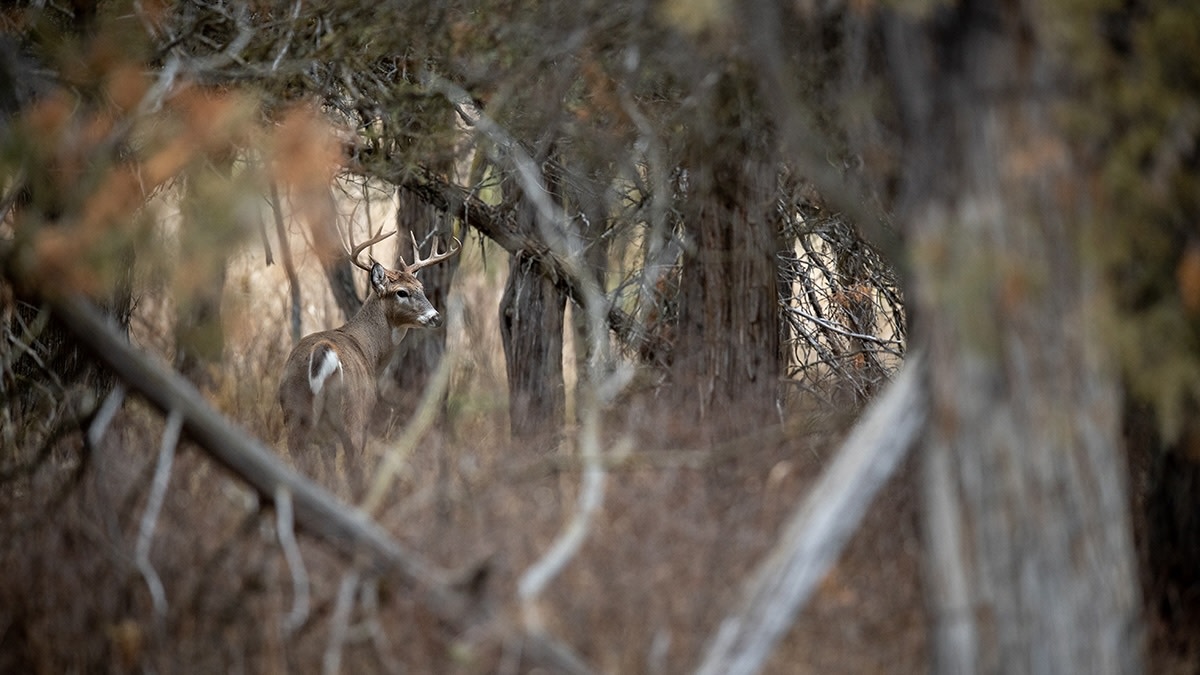
The cold, hard truth is that Boone & Crockett deer aren’t around every corner. Unless your hunting property butts up against a large wildlife preserve, or an outdoor TV property, the odds of you wrapping your tag around a 160-inch whitetail aren’t very good.
Every year, unrealistic expectations are the cause of empty freezers. Sure, there are hunters out there who put in countless hours to locate and kill the biggest whitetail in the country. To do this repeatedly, this can only be done by scouting, scouting, and more scouting.
If you’re not in a position to do that and simply want to take a good whitetail buck every season, the secret lies in learning to pinpoint ultra-productive spots within a given property. If you learn to locate these killer spots, mature deer will be using that area year after year. If you’ve found a spot like this, you know when you know. If you haven’t found a spot with this kind of repeatable productivity, here’s what to look for.
Relatively Low Hunting Pressure
Many articles have been written about the importance of low hunting pressure. You might have the best-looking spot in the whitetail world, but it doesn’t do you much good if the spot gets boogered up by other hunters day in and day out. An educated whitetail is going to quickly learn to avoid that area.
It’s also important to distinguish that hunting pressure is completely relative. Finding a low-pressure hunting spot doesn’t have to mean that no hunter will set foot in that spot all year. It also doesn’t mean that you need to hike to the furthest point away from the public parking lot as possible. Newsflash, that spot three miles back can also be a magnet to other hunters.
Practically speaking, for a whitetail buck to reach maturity, he needs to evade hunters season after season. If he lives in an area frequented by hunters, one day, he’ll run out of luck. Deer that reach maturity on public lands learn places where they can live relatively undisturbed. He may get bumped by hunters every once in a while, but human intrusion is somewhat of an irregularity.
Sometimes, that means living in a thick patch of timber, tucked far from roads and trails. Other times, that can mean living on a hill, perched directly above the trailhead, where he watches all hunters begin their pursuit.
Discrete Access
Maybe you’ve found the single best spot on a given property. Heck, maybe you even have exclusive hunting permission. Even in that situation, if you spook deer on every trip into the treestand, you’re stacking the deck against you.
If you’re educating the local deer herd, you now have a hunt or two before the herd adapts their behavior to avoid you. Find ways to access your stand with the least likely chance of being seen or smelled, even if that means taking the long way.
Wind That Favors the Deer
A public land buck isn’t going to live very long if he’s constantly traveling with the wind at his back. With that in mind, scouting new whitetail spots should be synonymous with studying the wind. Study the effect of differing wind directions as they blow across terrain features.
You might find that there’s a particular wind direction and speed that makes your tree and entry route bulletproof. For example, you might find that when a southwest wind comes into contact with a north-south oriented ravine, the wind swirls and does a consistent 180. You can use that anomaly to your advantage, like a chink in the armor of a deer’s defense system.
Wind That Favors the Hunter
One of the hardest things to do as a whitetail bowhunter is staying out of an area that can’t be hunted without educating deer, like a drainage littered with deer sign where the winds continually swirl. Call it redneck intuition, but learning to judge a spot’s productivity while scouting is an invaluable skill set. After all, you only get so much time to spend afield each fall and only so many peak-rut opportunities. Don’t waste them sitting in an unproductive tree. Sitting in a tree with an inconsistent wind is just that.
If your scent is blowing up and down the draw, even if momentarily, it’s only a matter of time before you get busted. And it always seems to be the shooter buck that busts you. No matter how good that area is, you need to back out. You may not need to abandon the area entirely, but circle the perimeter of the spot with a wind checker in hand until you find a place where the wind stays consistent. By keeping the pressure low, expressly free of human scent, you can now hunt that spot over and over again without diminishing returns.
If you’ve dialed it in and found the spot on the spot, it’s only a matter of time before a mature buck finds his way into your shooting lane. Learning to identify these primo stand locations takes a lot of legwork and plenty of trial and error, but once you’ve found it, you can usually take a mature deer from that spot season after season.



